With the advantage of being located along the river, the number of fish cages in Hai Duong has increased rapidly and become one of the provinces with the largest number of cages in the region. This is also one of the important forms of aquaculture in the province, contributing to increasing income for farmers.
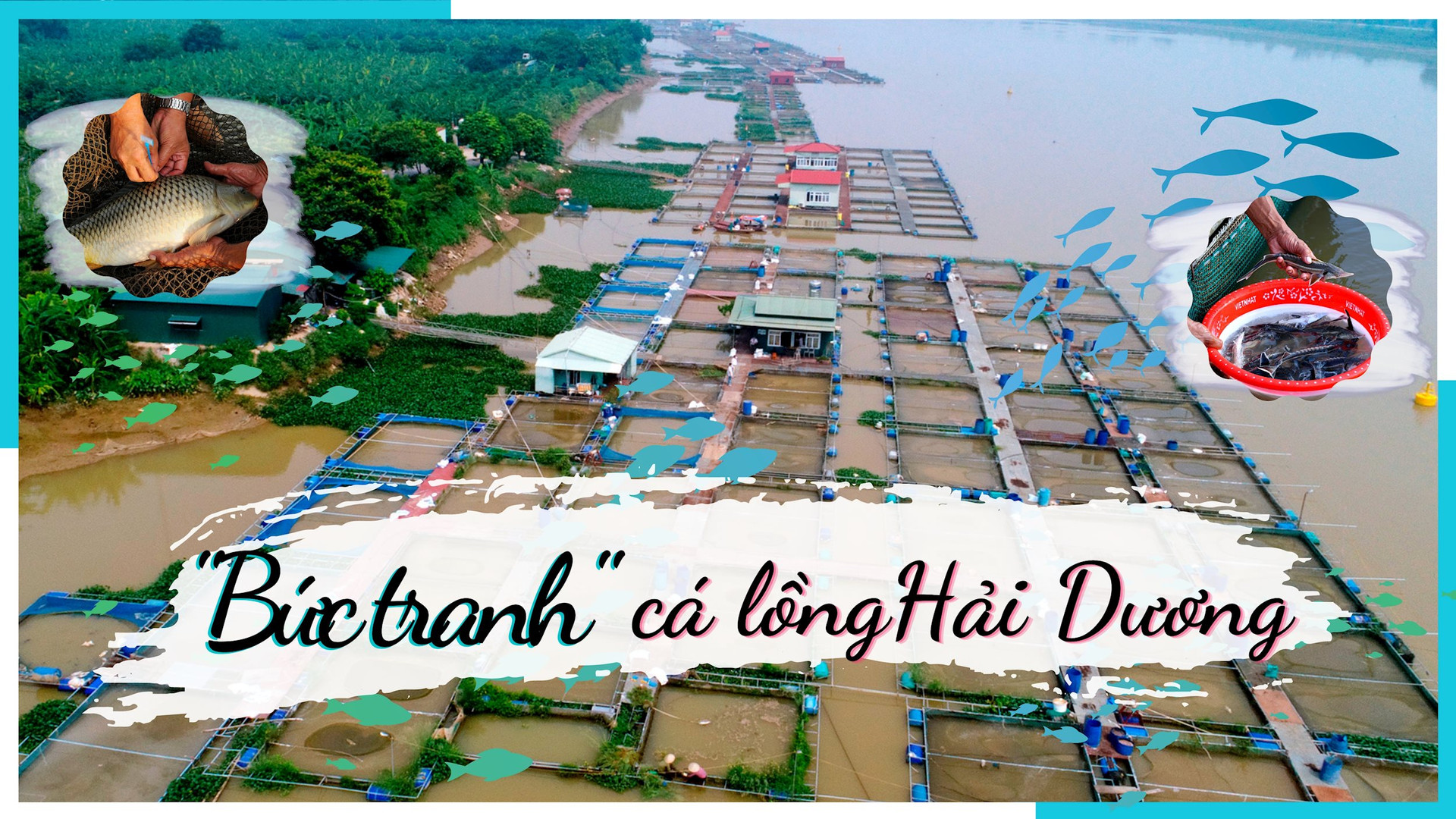
With the advantage of being located along the river, the number of fish cages in Hai Duong has increased rapidly and become one of the provinces with the largest number of cages in the region. This is also one of the important forms of aquaculture in the province, contributing to increasing income for farmers.
More than ten years ago, Nam Tan commune used to be a poor rural area of Nam Sach district, but now it has changed. Nam Tan has become a model new rural commune of Hai Duong with high-rise buildings built close together, wide village roads and alleys, and upgraded infrastructure to serve the needs of the people. This result is due to the joint efforts of the people and local authorities, as well as the great impact of cage fish farming on Kinh Thay river.
In 2009, taking advantage of the proximity to Kinh Thay River, some families in Nam Tan tried their hand at cage fish farming. From here, cage fish farming opened up a new direction for the local aquaculture sector. Nam Tan also became the “cradle” of cage fish farming in Hai Duong.
Nam Tan has a gentle riverbank and a suitable flow for placing fish cages. Less than 5 km of Kinh Thay River flowing through the commune, there are 1,080 fish cages of more than 60 households. A small community has formed here, living together and attached to the fish cage farming profession. The main types of fish raised are black catfish, crispy carp, crispy grass carp, red tilapia...
Having been attached to this river for many years, Mr. Tran Van Duong currently has 40 fish cages. According to Mr. Duong, fish farming in the river can be done on a large scale because the river water is always clean, the fish live healthier than in ponds. On average, each cage has an area of 36 - 54 m2, farmers can harvest up to 5 tons of fish. Each fish cage farming season lasts from 1 - 2 years, depending on the size of the fish when they are first released into the cage and the different types of fish. Each cage, from investment in construction, seed money, food money to hiring workers, costs from 300 - 400 million VND. After harvesting, after deducting expenses, each cage makes a profit of about 100 million VND/crop. In years when prices are good, a fish cage can make a profit of up to 150 million VND. Currently, with about 60% of the total number of cages harvested each season, he makes a profit of billions of VND.
“Having been involved and experienced many ups and downs in cage fish farming, I can confirm that no other farming profession is as effective as cage fish farming. As long as we are persistent, tenacious, diligent and creative, the river will give us what we deserve,” Mr. Duong shared.

Cage fish farming in Nam Tan has developed strongly and quickly spread to other localities, including Nam Dong ward (Hai Duong city). Up to now, the whole ward has more than 900 fish cages owned by 86 households.
Mr. Mac Van Bo in Dong Ngo residential area is one of the first households to raise fish in cages in Nam Dong ward. From a few initial cages, he now has 20 cages, mainly grass carp and common carp. In the early years, the number of cages was small, so the fish in cages developed well with high selling prices. At that time, each cage could bring in a profit of several hundred million VND, but in recent years, fish prices have fluctuated while animal feed prices have increased, so income is no longer as high as before. However, those who stick with the profession still make a profit.
According to the General Statistics Office, Hai Duong currently has 7,358 cages, with cage fish output reaching over 20,000 tons, accounting for nearly 22% of the province's aquaculture output. Mr. Tran Van Quan, Vice Chairman of the Provincial People's Committee, affirmed: "Hai Duong is a locality with a tradition of large-scale freshwater fish farming, and at the same time has a dense river system, water quality, and riverbank terrain that is very suitable for developing cage fish. With the application of high technology, many facilities have been installed with automatic monitoring and care systems, QR code extraction, and product traceability stamps. For many years, Hai Duong cage fish have brought significant benefits to farmers and localities."
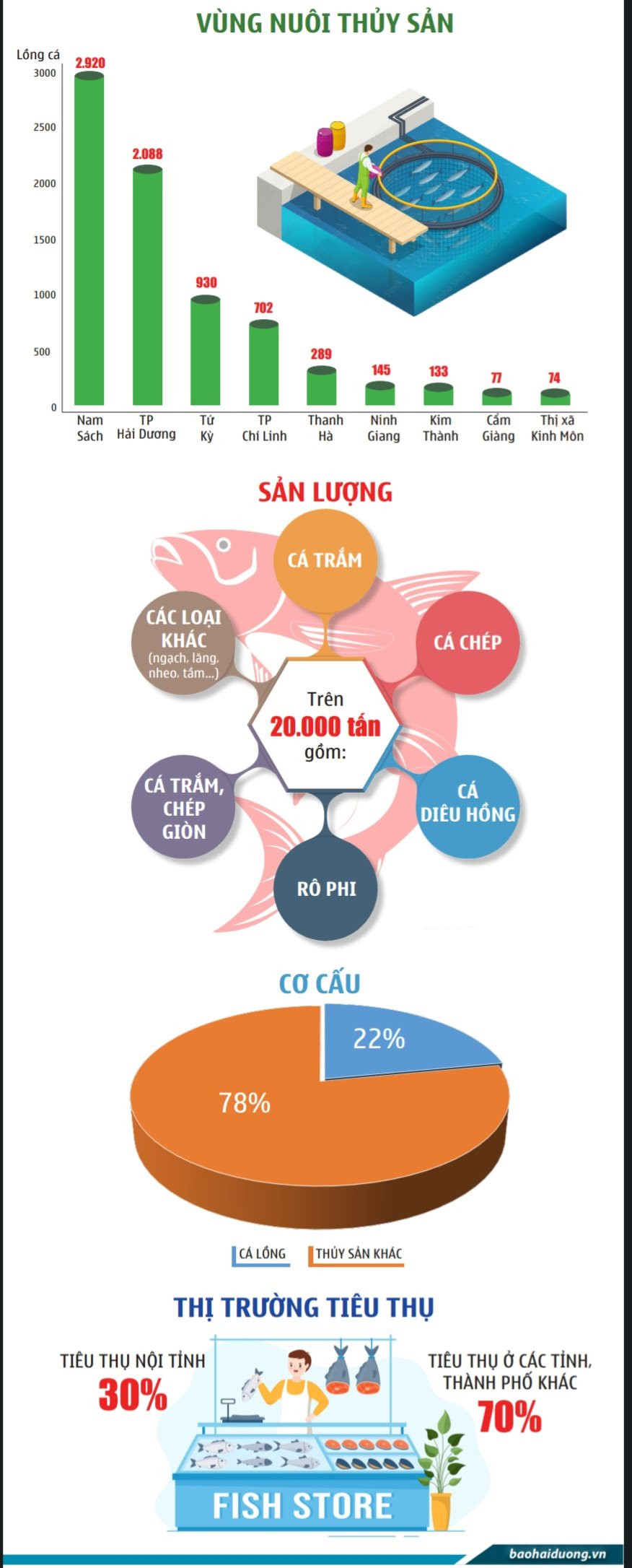
Not only is it the “cradle” of Hai Duong cage fish, Nam Tan is also a pioneer in the movement of raising specialty fish such as catfish, catfish, cinnamon, grass carp, crispy carp, etc. Raising grass carp and crispy carp is also elaborate and meticulous right from the stage of selecting the breed. In the early stages, the fish are raised and fed normally like other types of fish. When the fish reach a weight of about 2kg or more (about 1 year old), they will be selected to be transferred to cages to become crispy fish. Grass carp and crispy carp selected for raising must be healthy and have a beautiful shape.
When placed in the fish cage, the fish will only eat broad beans. There are times when the fish can be sold for 170,000 - 180,000 VND/kg, with 5 tons of fish per cage, farmers can easily earn nearly 150 million VND/crop. Not stopping there, many cage fish farmers in Nam Tan are also experimenting with raising sturgeon, a type of fish that is only used to living in cold water.
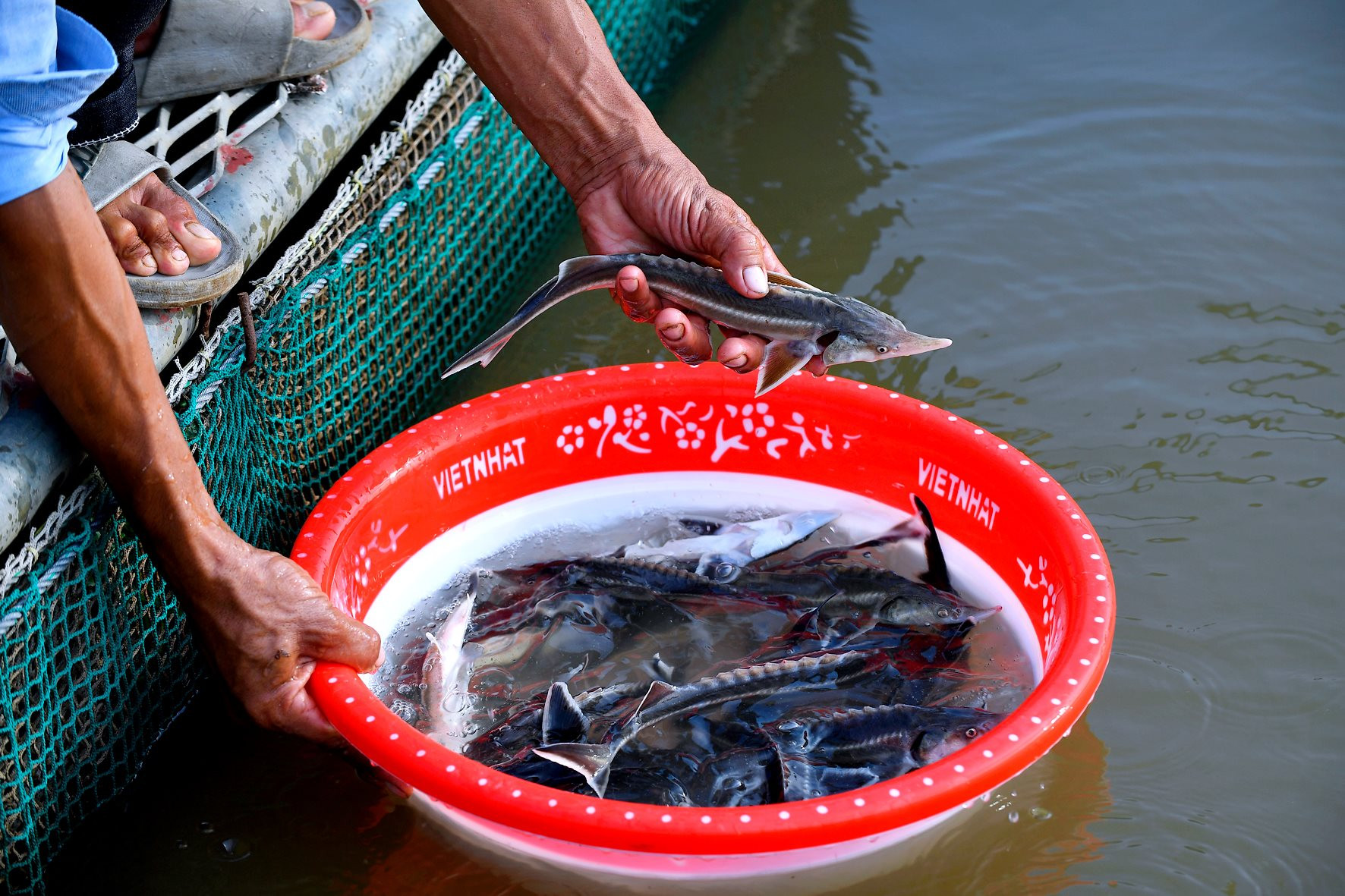
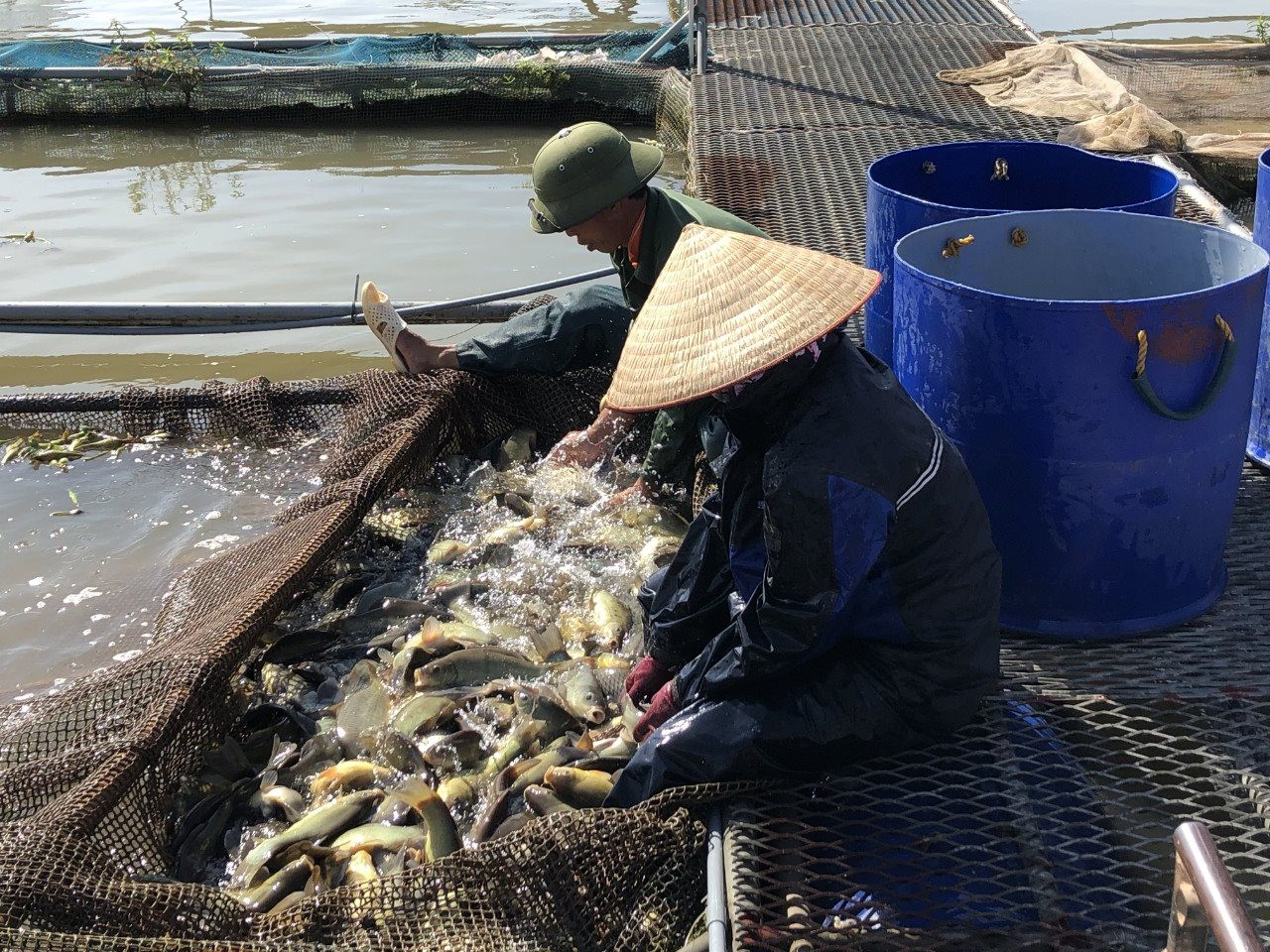
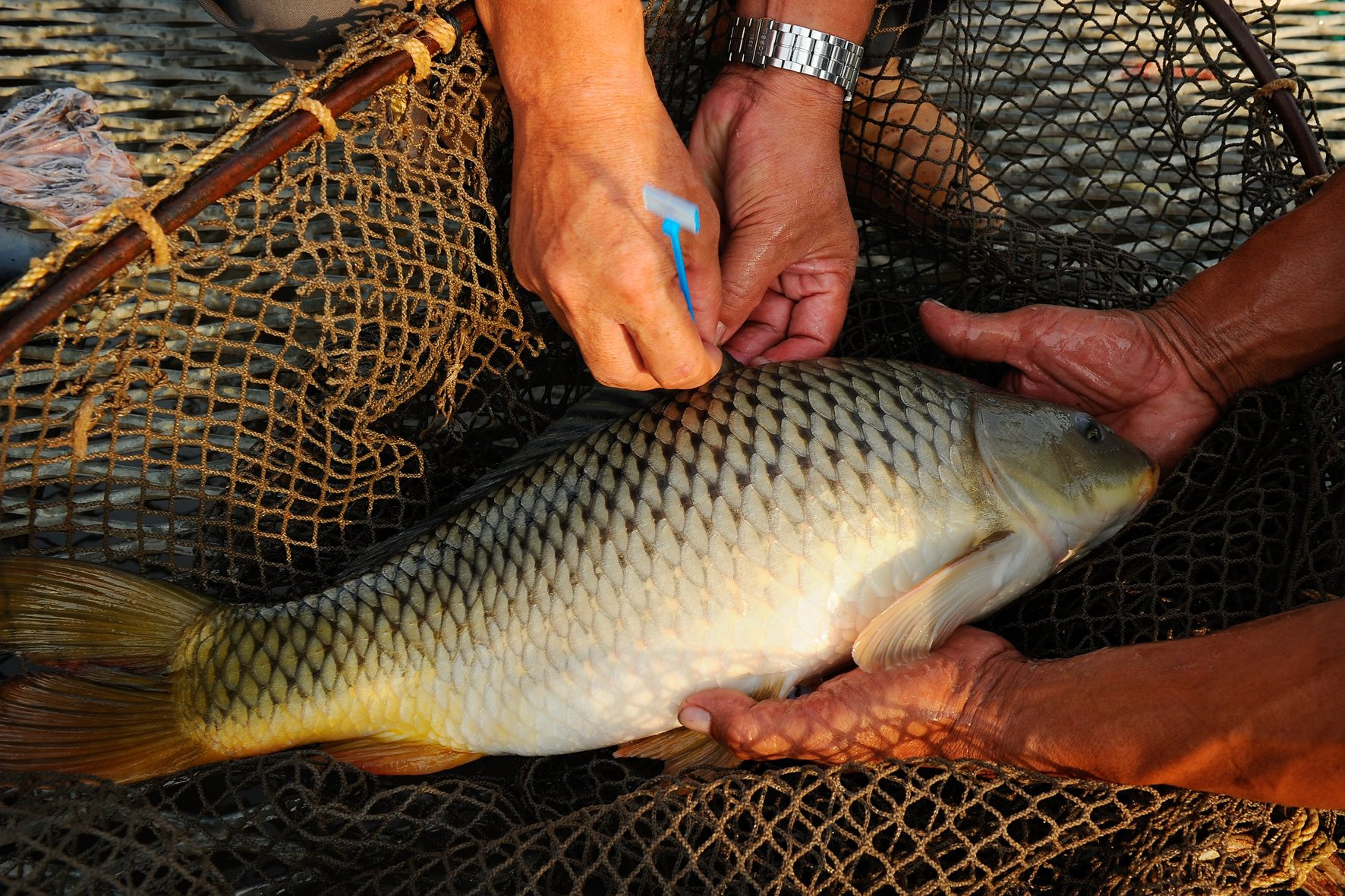
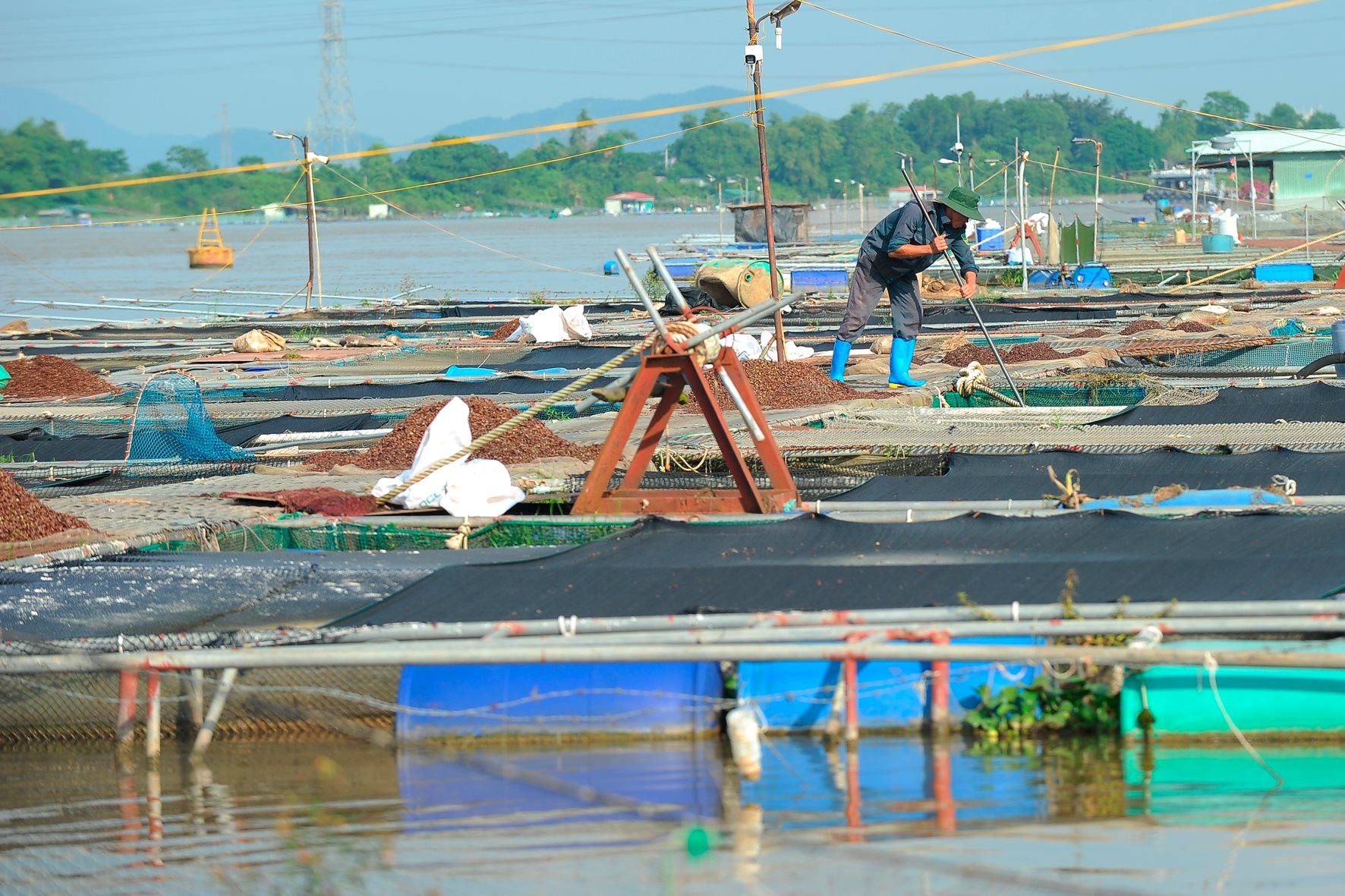
Currently, up to 80% of households in Nam Tan commune raise specialty fish.
Mr. Hoang Van Toan, Chairman of Nam Tan Commune People's Committee shared: “The commune has more than 1,000 fish cages on the river, of which up to 80% are raising specialty fish with high economic value. Since 2021, some households have experimented with raising sturgeon and have achieved certain successes. From a few households, there are now dozens of households raising about 100 sturgeon cages. This will be a new direction with many prospects for local cage fish farmers.”
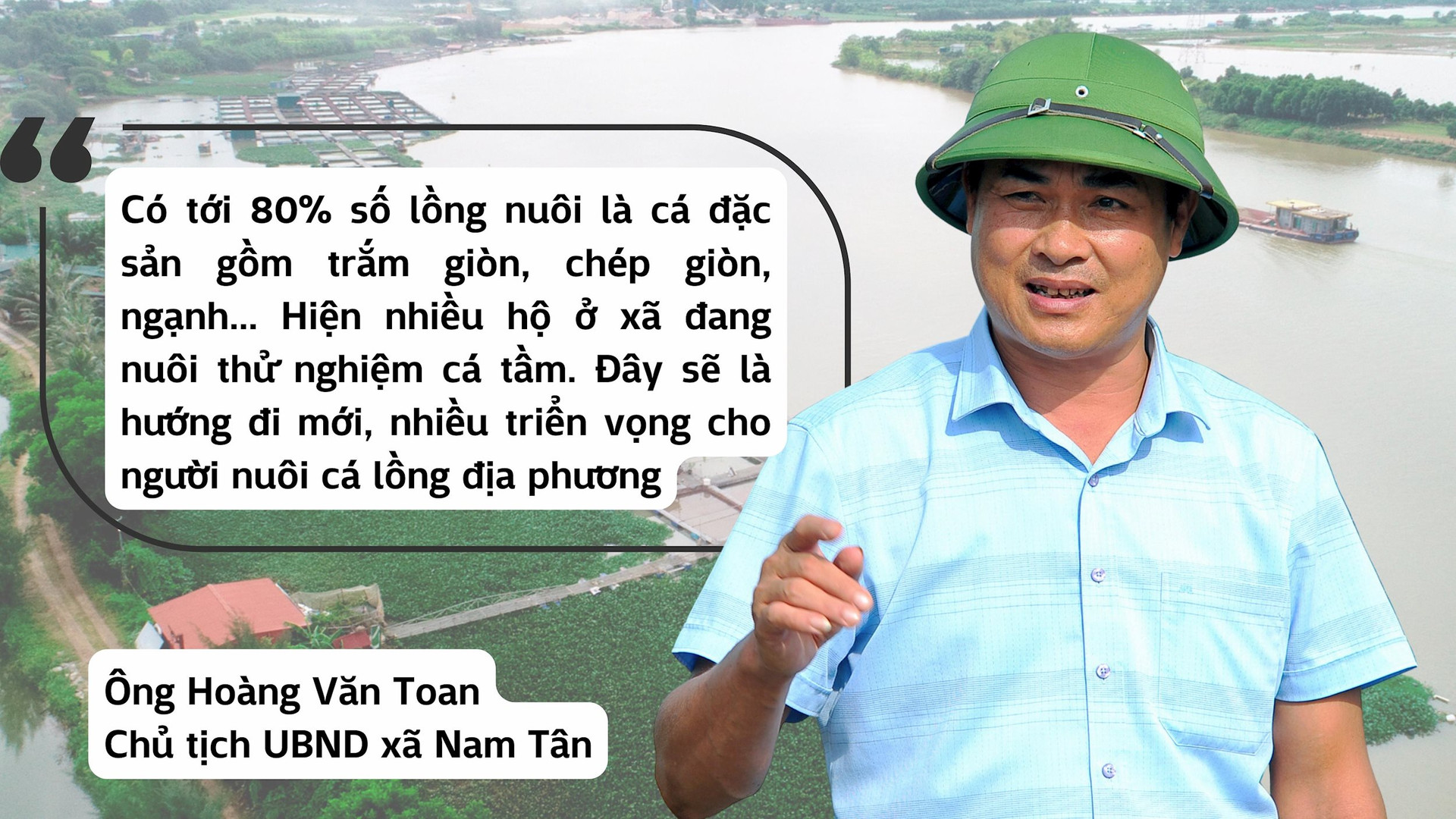
Raising sturgeon since 2021, Mr. Nguyen Huy Toan has proven that sturgeon can grow and develop well in Hai Duong's environmental conditions. The most suitable time for raising sturgeon is from August of the previous year to April of the following year. At that time, the water temperature is only 23 - 24 degrees Celsius, very suitable for the growth conditions of the fish. The fish grow quickly, so after only about 7 - 8 months, the fish reach a weight of 2 - 3 kg and are eligible for sale.
With a selling price of 200,000 - 240,000 VND/kg, after deducting costs, farmers earn a profit of 100,000 - 150,000 VND/kg, much higher than other specialty fish. "Currently, I continue to test-raise 10,000 sturgeon. In previous crops, due to lack of experience, the fish loss rate was high. This crop, I hope to achieve better results. It is expected that after Tet, sturgeon will be ready for harvest," Mr. Toan added.
At first, he raised grass carp and common carp.,Tilapia, catfish... have quite good economic value. However, for him, those mass-produced fish cannot fully exploit the potential of cage fish, so he came up with the idea of raising "clean fish", and started with clean carp - a type of fish with high nutritional value and very popular in the market.
In the first 2 years, carp are raised normally, but from the 3rd year onwards, the fish are fed with a special food. That is the larvae of black soldier flies. Mr. Thuong's clean carp cages have been raised for 6 months, weighing 7-8 kg/fish and meeting the standards for sale.
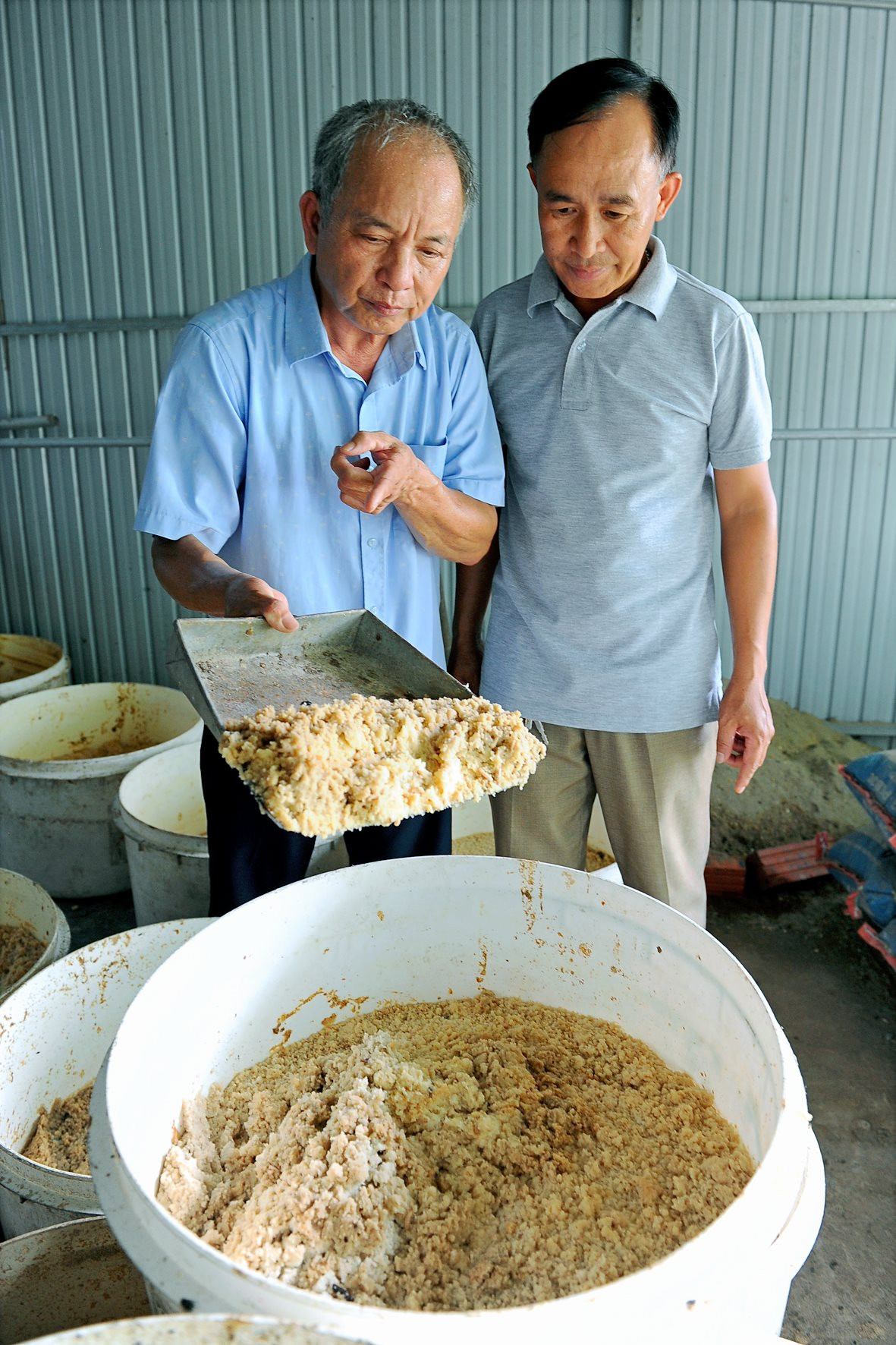
To improve the consumption stage, he has prepared 20 points of sale for clean carp in the Hanoi market. This is also a new direction, completely different from the crispy fish farming in Nam Tan commune. “In the near future, I will export about 200 tons of clean fish to the market under the Casafish brand. With an average selling price of about 150,000 VND/kg, this fish crop can earn billions of VND from these 200 tons of clean fish. In the near future, I will also expand the scale of raising black soldier fly larvae and focus on building my clean carp brand.”
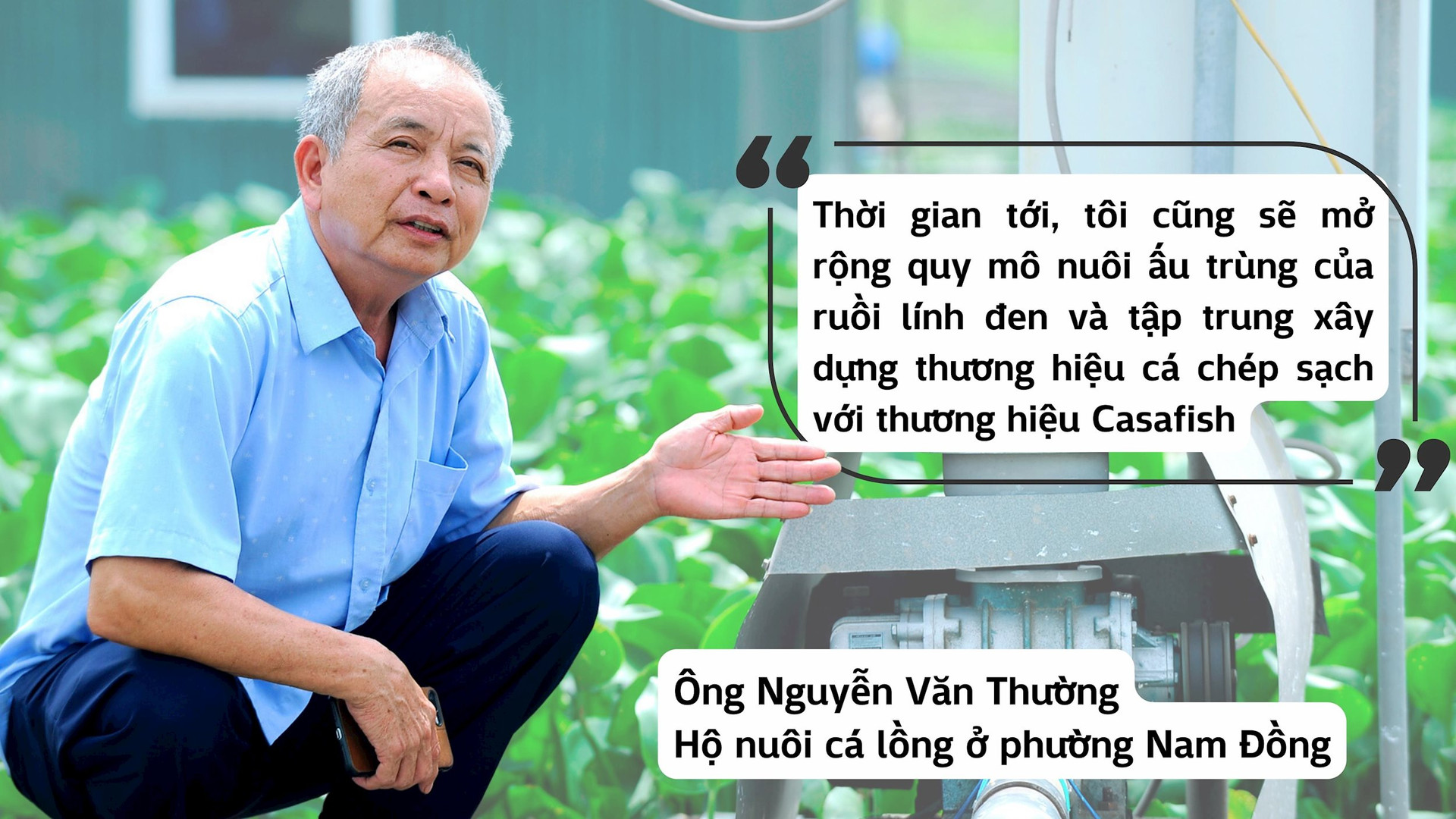
When talking about cage fish billionaires, we cannot fail to mention Mr. Nguyen Trung Tuu in Nam Tan commune. He is always a pioneer in raising specialty fish and applying information technology in tracing the origin of fish.
In 2014, he raised 35 cages, mainly catfish and tilapia. pink. Each year, he harvests 190 - 200 tons of fish, the selling price ranges from 70,000 - 120,000 VND/kg depending on the type of fish. After deducting the cost of fish fry, feed, labor, bank interest, and depreciation of fixed assets, each fish cage brings in a profit of 40 - 45 million VND. In total, he earns over 1 billion VND in profit. Realizing that in order to have a stable output for caged fish, it is necessary to improve product quality, so he researched and invested in raising grass carp and crispy carp according to VietGAP standards.
In the first year, he raised fish for meat, and in the second year, he fed the fish with broad beans for 6-8 months to turn them into specialty fish such as crispy grass carp and crispy carp. In 2018, he registered the trademark "Nguyen Trung Tuu Crispy Grass Carp and Crispy Carp", each product he registered had traceability, and a chip was attached to the fish's fin. His crispy grass carp and crispy carp brand supplied over 100 wholesale and retail agents nationwide, mainly Yen So market, Long Bien market, Bac Ninh market, Bac Giang and exported by air to Ho Chi Minh City.
He currently has about 100 fish cages on the river, of which 45% are meat fish and 55% are specialty fish. Each year, his family harvests 500-600 tons of specialty fish, at a price of 150,000 VND/kg. After deducting expenses, he earns tens of billions of VND in profit.
Cage fish farming has become a form of aquaculture with high economic efficiency in Hai Duong. There are many cage fish billionaires but many households are struggling because of this profession. The profession is closely linked to rivers and is greatly affected by nature, so it always has potential risks. In the history of the profession, hundreds of tons of cage fish have been "floating down the river" due to floods, epidemics, etc.
With the goal of developing sustainable cage fish farming while ensuring the environment, Hai Duong aims to improve quality, promote products, connect businesses and people to link the chain from production to consumption, and build a brand for cage fish.
Perform:TRAN HIEN - NGUYEN LAN
Image:COMMON
Graphics:HA KIEN-TUAN ANH